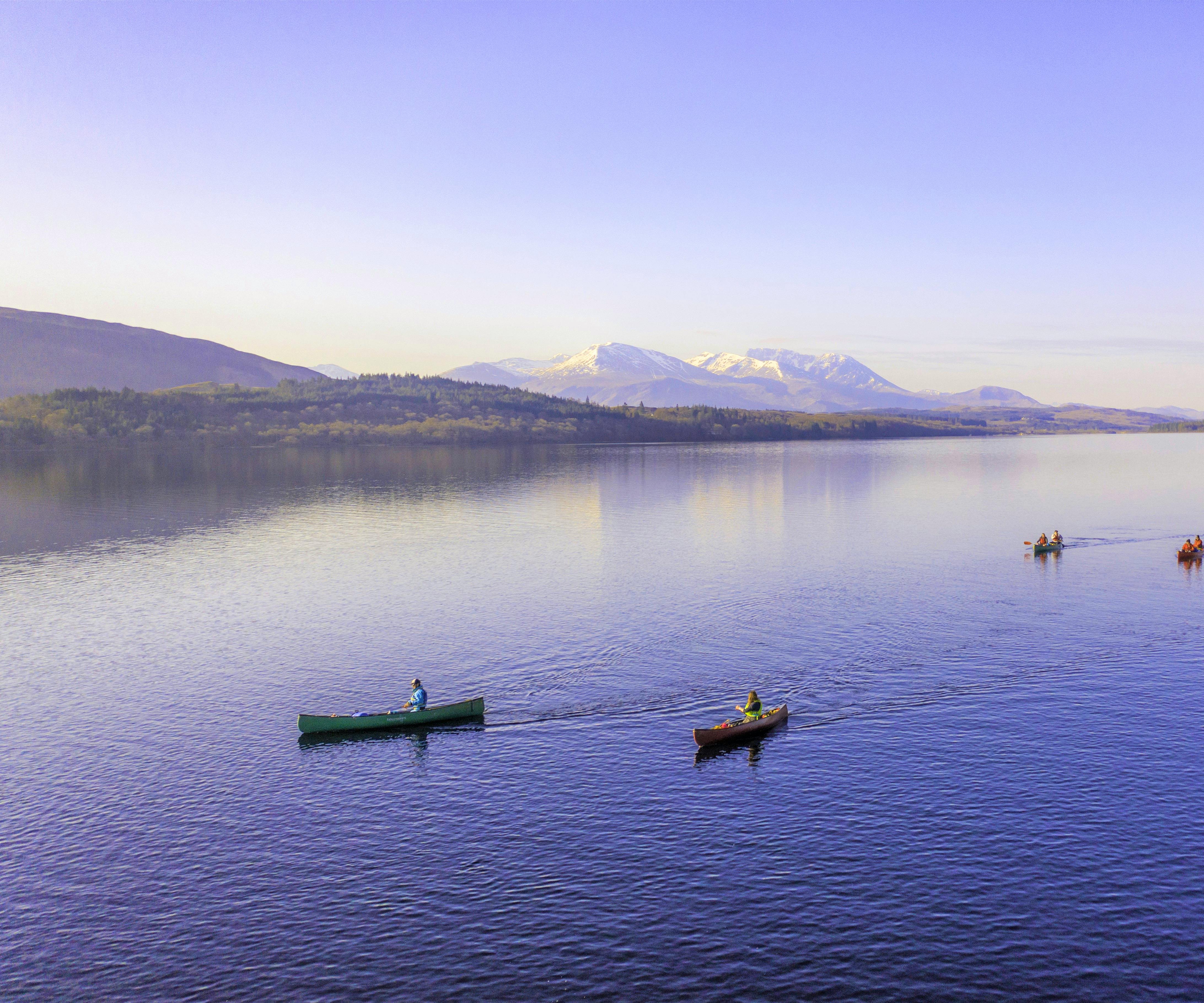Is The Sea Rough In The Norwegian Fjords?
Is the sea rough in the Norwegian fjords? This is one of the most common questions for anyone planning a boat trip or cruise in the fjords.
The short answer is not usually, but rough seas are certainly possible. We’ll unpack this in more detail below, where we cover the fjord weather conditions, geography, and all of the questions you need to know before taking a cruise in the fjords with Skyhook Adventure.
Let’s get into it.
What are the Norwegian Fjords?
The Norwegian Fjords are a spectacular and iconic natural feature found along the coast of Norway. They are a type of narrow, deep, and elongated inlet or sea channel formed by the erosive activity of glaciers over millions of years.
The word "fjord" itself is of Norwegian origin and is used internationally to describe these distinctive geological formations.
Here are some key characteristics of the Norwegian Fjords.
Glacial Origin
Norwegian Fjords were primarily formed during the last Ice Age when glaciers carved deep valleys into the landscape. As the glaciers retreated, seawater flooded these valleys, creating the long, narrow bodies of water that we now know as fjords.
Rugged Terrain
Fjords are surrounded by steep, towering cliffs and rugged mountainous terrain, which often feature lush green vegetation and Norway fjords waterfalls cascading down the cliffsides.
Deep Waters
Fjords are known for their incredible depth, with many of them reaching several hundred meters deep. The combination of depth and steep sides creates a dramatic and picturesque landscape.
Saltwater Inflows
Fjords are typically connected to the open sea at their mouths, allowing saltwater to flow in and create a unique marine ecosystem. This mixing of saltwater and freshwater influences the biodiversity of the region.
Scenic Beauty
Norwegian Fjords are renowned for their breathtaking natural beauty. The combination of deep blue waters, green forests, and towering cliffs makes them a popular destination for tourists, photographers, and nature enthusiasts.
Recreational Activities
The fjords offer a wide range of recreational opportunities, including boating, kayaking, wildlife watching, and hiking in Norway fjords. They are also popular cruise destinations, with cruise ships often navigating the narrow fjord passages.
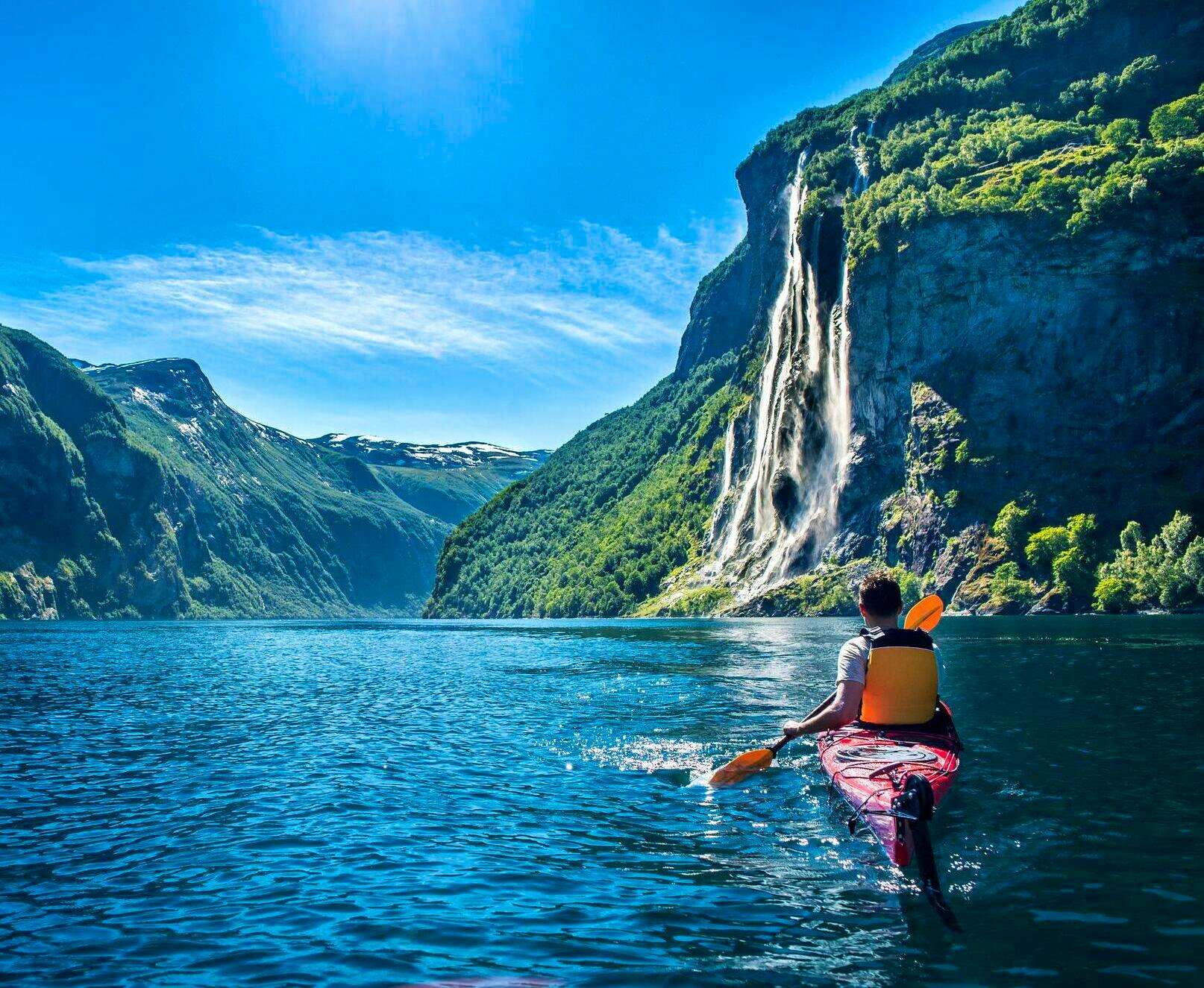
Some of the most famous Norwegian Fjords include the Geirangerfjord, Nærøyfjord, Sognefjord, and Hardangerfjord, among others.
These fjords, along with their surrounding landscapes, have been recognized as UNESCO World Heritage Sites for their outstanding natural beauty and ecological significance.
Cruising the Norwegian Fjords
If you’re wondering “Is the sea rough in the Norwegian fjords?”, then you’re probably planning some kind of a cruise.
Taking a cruise is one of the best way to see the fjords in Norway, as cruises let you get up close to the fjords and view them from a unique perspective.
There are multiple cruise options available throughout the year, ranging in the destinations they visit and the length of time they cruise for.
If you’re looking for a comfortable way of witnessing the Norwegian fjords by sea, then a cruise gives you the best time to go to Norwegian fjords.
However, you could also take a ferry across the Norwegian fjords for an alternative way to see the fjords from the sea.
Ferries are a lot more affordable than cruises and simply take you from one port to another. While there’s no luxury or overnighting involved, ferries are still a fun and scenic way to travel through the fjords. Not to mention they’re far more affordable.
For the adventurous, you could also go kayaking in Norway fjords through the fjords. Guided kayak tours are available to help you see these magnificent landscapes up close. This is also the best way to witness the Norwegian fjords wildlife.
You could also sail through the fjords if you have your own boat - which is an amazing way to experience these landscapes.
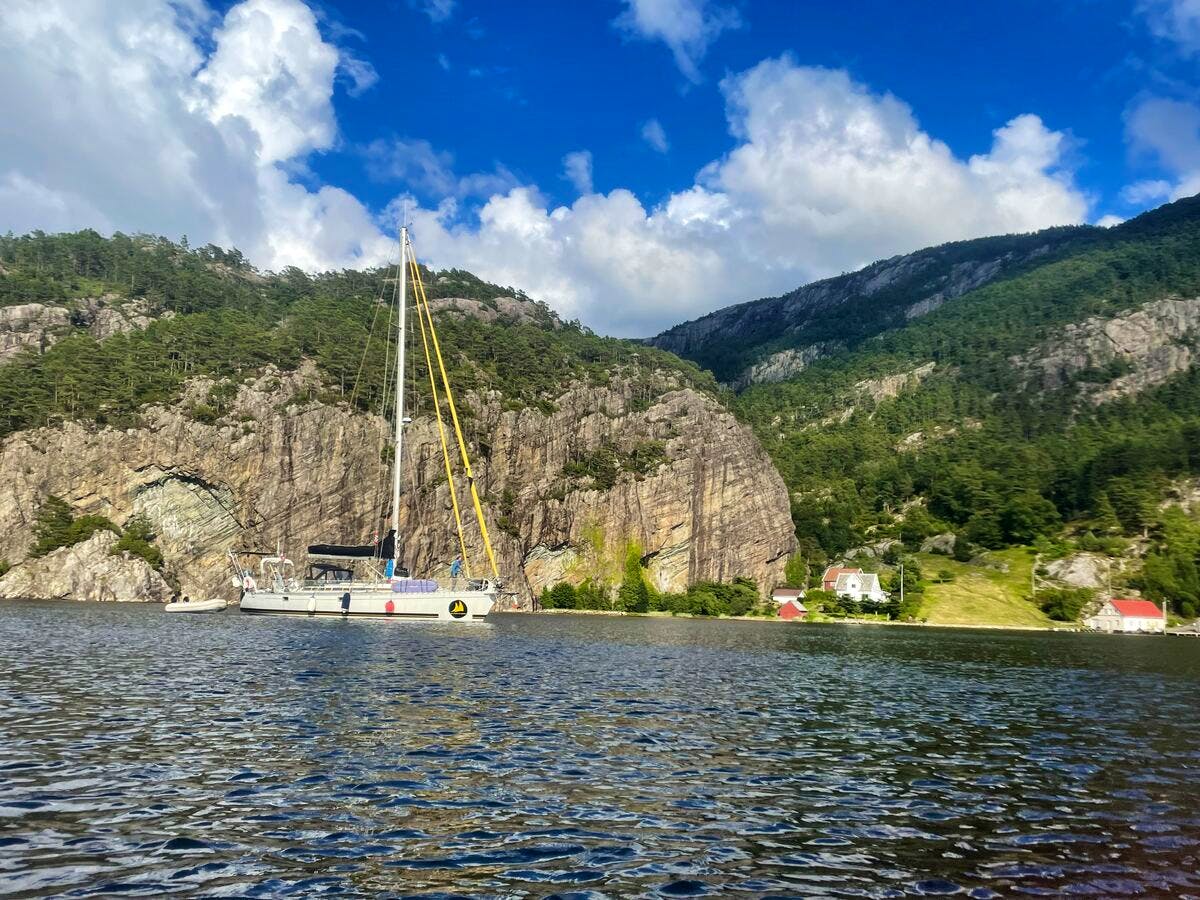

Latest Deals
Is the Sea Rough in the Norwegian Fjords?
The sea conditions in the Norwegian Fjords can vary depending on several factors, including the time of year, weather, and the specific location of the fjord. Generally speaking, the sea in the fjords is relatively calm, but it can also become rough, especially during periods of bad weather or strong winds.
During the summer months, the Norwegian Fjords often have calm and tranquil waters, making them popular destinations for cruising and boating.
However, even during the summer, the weather can change quickly, and it's not uncommon for the sea conditions to become rough if a storm rolls in.
In the winter months, the Norwegian Fjords can experience more turbulent seas due to winter storms and colder temperatures. The combination of wind, waves, and icy conditions can make the sea rougher and less predictable.
It's essential to check the weather and sea conditions before any maritime activities and to be prepared for changing conditions, as the weather can change rapidly in this region.
If you plan to visit or travel through the Norwegian Fjords, it's a good idea to consult local authorities, weather forecasts, and experienced local guides to ensure your safety and a more enjoyable experience.
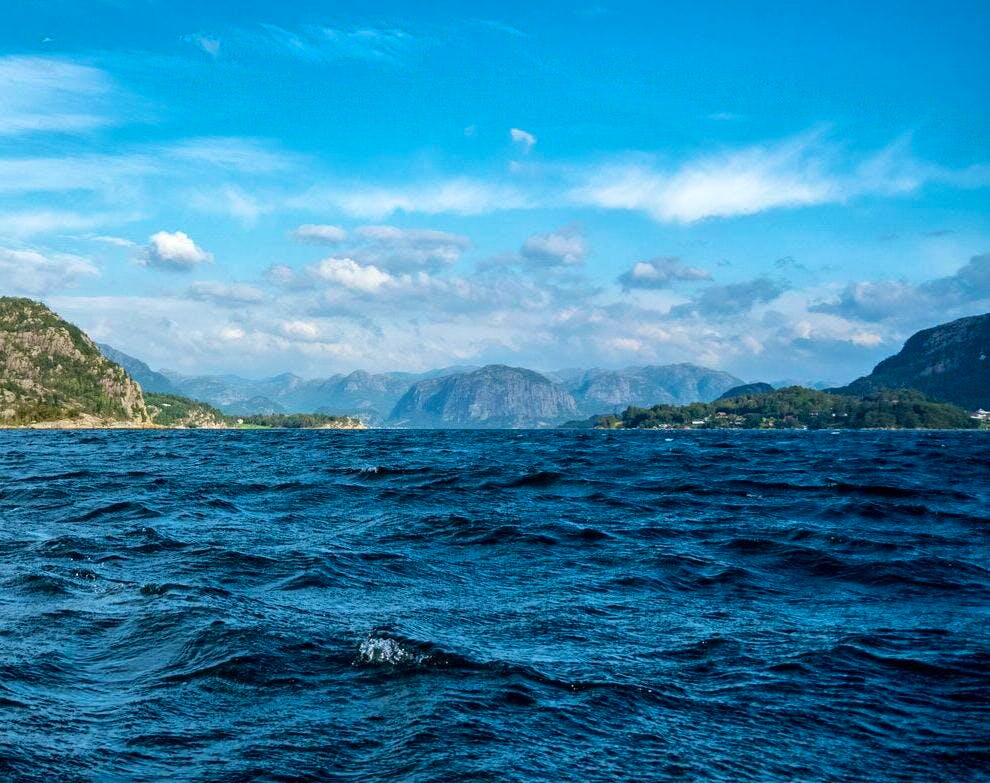
What are the Weather Conditions Like in the Norwegian Fjords?
Are the Norwegian fjords rough? To answer this question, it’s best to understand the broader climate and weather conditions of the fjords.
The Norwegian fjords weather can vary significantly throughout the year and is influenced by its northern location, the proximity to the North Atlantic Ocean, and the region's complex topography.
Here's a general overview of the weather conditions you can expect in the Norwegian Fjords.
Summer (June to August)
Summer is typically considered the best time to visit Norwegian fjords and the fjords in particular. During this period, the weather is relatively mild and pleasant, with average temperatures ranging from 15°C to 20°C (59°F to 68°F) in the fjord areas.
Daylight hours are long, with the famous Midnight Sun occurring in the northern parts of Norway, including some fjord regions. This means almost continuous daylight, creating a unique experience for visitors.
Autumn (September to November)
Autumn sees a gradual drop in temperatures, with daytime highs ranging from 10°C to 15°C (50°F to 59°F) in September but getting cooler in October and November.
Rainfall increases during this season, and you can expect more overcast and wet days, which can be particularly beautiful as the foliage changes colour.
Winter (December to February)
Winters in the Norwegian Fjords can be quite cold, with temperatures often hovering around or below freezing. In some regions, temperatures can drop significantly below freezing.
Snowfall is common during the winter months, making it a popular time for winter sports enthusiasts. The fjords can look stunning with snow-covered landscapes.
In northern areas, you may experience the Polar Night, where the sun does not rise above the horizon for an extended period.
Spring (March to May)
Spring marks the transition from winter to a milder season. However, temperatures can remain cool, with highs ranging from 5°C to 10°C (41°F to 50°F).
As spring progresses, the days become longer, and the landscape starts to awaken with the melting of snow and the blossoming of flowers.
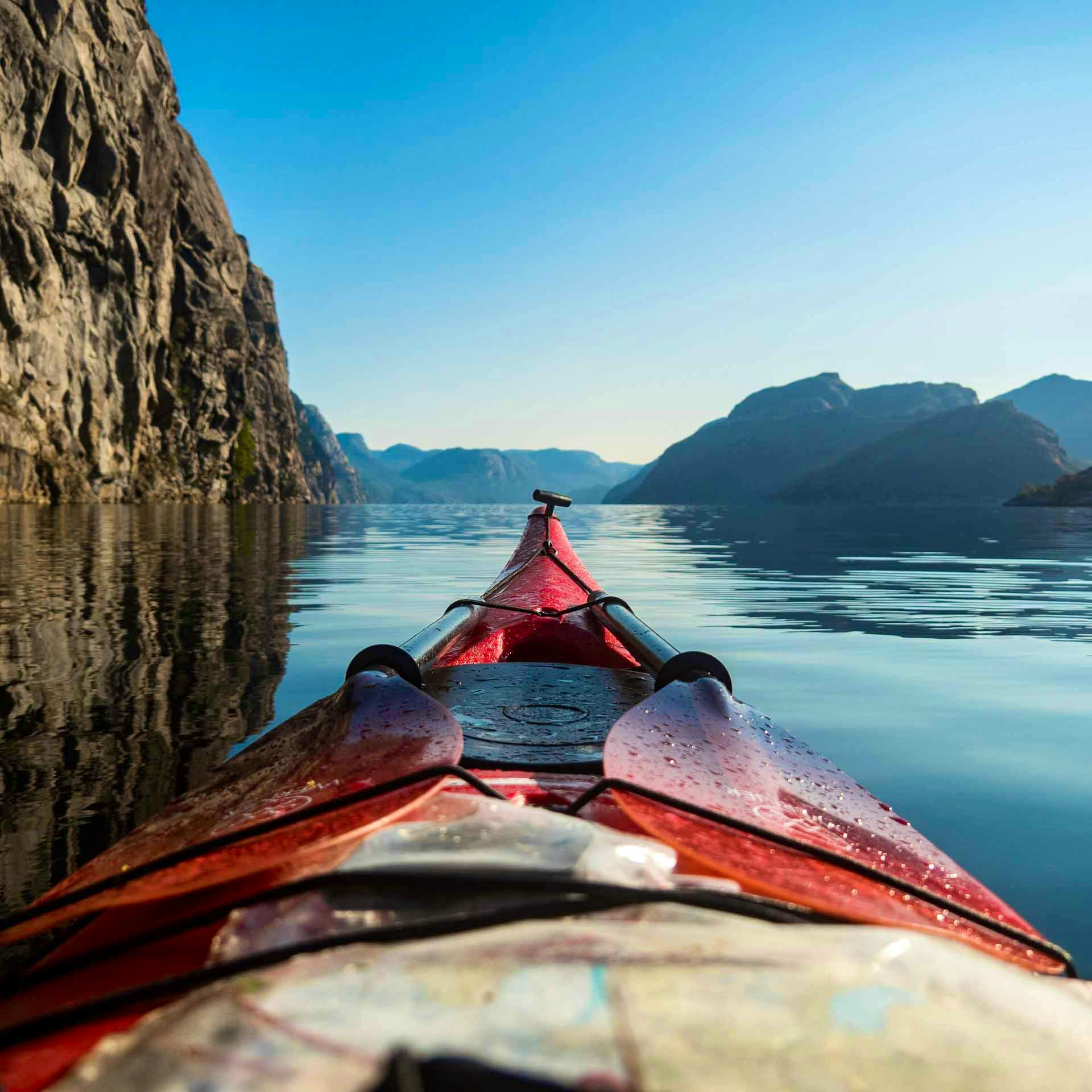
It's important to note that weather conditions can be quite variable within the Norwegian Fjords due to their geographical diversity.
Coastal areas may experience milder temperatures and more maritime weather, while inland areas can be colder and experience more extreme temperature fluctuations. Fjords can also influence local weather patterns, leading to variations in precipitation and wind.
When planning a visit to the Norwegian Fjords, always check the specific weather forecasts for the region you plan to explore and be prepared for changing conditions, especially if you're travelling during the transitional seasons.
Conclusion
So, is the sea rough in the Norwegian fjords? Not usually, but it can be.
If you’re planning any kind of cruise, kayaking trip, or boating adventure on the fjords, then make sure that you check the weather forecast and understand what the weather conditions will be like. Planning ahead is essential for the ever-changing fjord weather.
Seeing the fjords from the water is a truly magical experience, so try to book your cruise or kayaking trip when the waters are calm. It will certainly be a highlight of any visit to Norway.
FAQs
Are the Norwegian Fjords always calm?
No, sea conditions in the fjords can vary. Summers tend to be calmer, which is ideal for Norway camping holidays while winters can bring rougher seas.
Can I go on a cruise during the winter months?
Yes, but be prepared for rougher sea conditions. Some cruise operators offer winter fjord cruises with experienced crews, so you have some things to do in Norway in winter.
Is it safe to kayak in the fjords?
Kayaking is generally safe during the summer months when the seas are calmer. Always follow safety guidelines and choose guided tours for added security.
What should I pack for a fjord trip?
Layers of warm clothing, waterproof gear, and sturdy footwear are essential, especially if you're visiting the best fjords in Norway in the colder months.
Are there fjord tours that focus on wildlife?
Yes, many tour operators offer wildlife-focused tours, providing a chance to spot seals, dolphins, and whales such as our fishing in Norway fjords tour with Skyhook.
Are there any specific fjords known for rough seas?
While sea conditions can vary, some fjords, like the Sognefjord, are generally calmer due to their size and sheltered location.
Read More Norway Articles:
Find your next adventure
Why Skyhook?
Join over 27,000 Skyhook adventurers who've used our platform to book directly with our vetted local guides, at local prices (we never markup).
Expert Local Guides
Experienced local guides, handpicked by us.
Best Prices
Never pay a markup on the local guide's price.
Exclusive Club
Earn loyalty rewards every time you travel.
Great Social Vibes
Small group tours provide a richer experience.
Stellar Feedback
Over 2,800 reviews, average of 4.9/5 stars.











